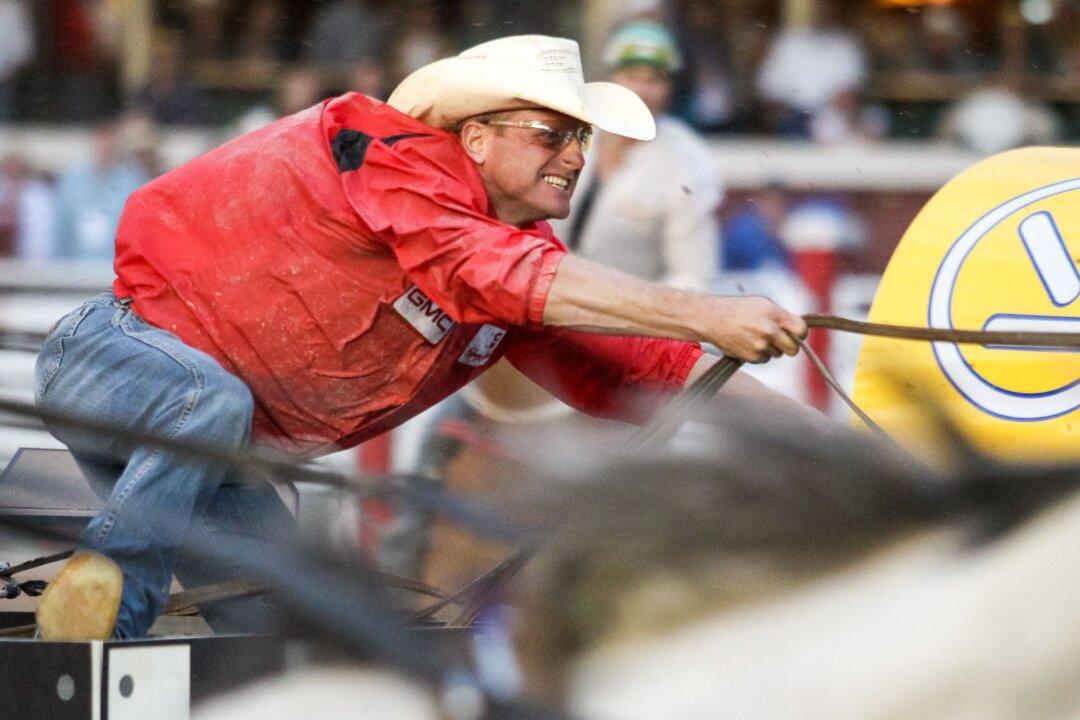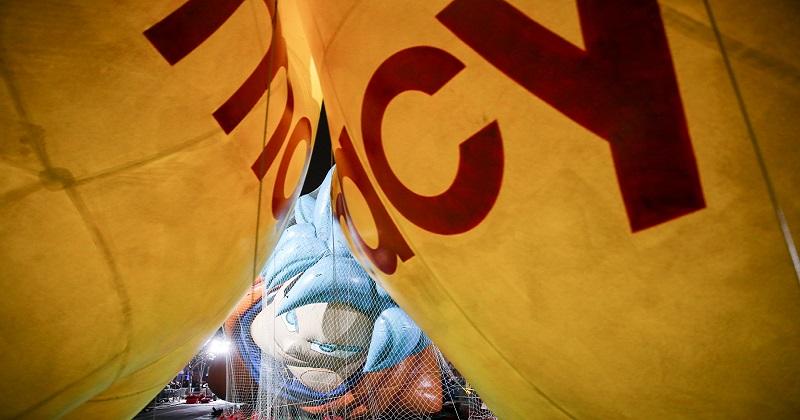CALGARY—Chuckwagon racing is one of the most exciting and competitive events at the Calgary Stampede, but the pressure doesn’t faze Jamie Laboucane, who has grown up with the sport and its heroes.
“As soon as that horn goes and the horses charge and turn, you forget everything that’s going on and you’re just concentrating on every part of the race even before you pull into the barrels,” he says.
“It’s just such a thrill.”
The 27-year-old, who hails from Saskatchewan, started outriding at 15 and driving five years later. His dad is the renowned Brian Laboucane, six-time Canadian champion. His godfather, Dale Gray, is a Canadian outriding champion and five-time winner of the world outriding title.
Laboucane will be competing against his father and 34 other drivers in the Stampede, which begins July 4. He’s confident he will do well and feels good about his two teams of horses.
“I’m hoping to be very competitive, possibly make the semi-finals if not the final heat,” he says.
“The Calgary Stampede is the Stanley Cup of wagon racing. I’ve really worked on getting my outfits (horses) ready to go to the show and do well.”
The stakes are high. Gone are the days when the grand prize at the popular Stampede event was a fine hat. The sport is becoming richer and everyone who competes wins money—think $1.15 million divided unevenly between 36 competitors. And then there is sponsorship.
Chuckwagon racing at the Stampede began in 1923—that was the first time it was held as a spectator sport. The race is a fast-paced demonstration of how cowboys used to break camp in the Old West, and in the early days even involved lighting a fire. It was a big hit with the crowd and has continued ever since, and today the Stampede’s chuckwagon race is the most famous in the world.
The origins of the race are unknown and the stories vary. In the most popular version, at the end of a week of hard work on the range, cowboys would head into town for a night of revelry. Whoever arrived at the saloon last had to buy the first round, so they would rush to pack up their wagons and race each other to town.
It was all about having a fast team that could break camp efficiently, and chuckwagon racing today seems to have come from that tradition.
For the uninitiated, the driver commands the team of horses pulling the wagon while supported by two outriders who follow along. After “breaking camp,” the team completes a figure eight around two barrels before racing down a dirt track. The event, which pits four teams against each other, has been dubbed the “half mile of hell.”
‘We Love These Horses’
The sport, which is wildly popular in the Canadian prairies and parts of the United States, has faced opposition from animal welfare groups, who want it banned. They say it is dangerous and cruel to the horses, which occasionally suffer injuries and have to be euthanized.
Between 1986 and 2013, approximately 50 horses died in chuckwagon races at the Calgary Stampede. After four horses died in the 2010 races, the Stampede organization introduced several changes, including investments in animal welfare research.
The Calgary Humane Society has been involved in discussions regarding the implementation of greater safety measures. They are against animals being used for entertainment when they can be injured, but are working with the Stampede to influence the shape of the sport’s evolution and improve its safety record.
Laboucane, who is a member of the Canadian Professional Chuckwagon Association, argues that while he understands “where the critics are coming from,” the horses are cherished and well cared for.
“We’ve been doing so much to prevent injuries. ”We have have ‘fitness to complete’ programs, drug testing—everything that proves that we’ve been taking care of the horses well. Honestly, I take care of these horses better than myself,” he says.
“Yes, accidents can happen, but for the amount of accidents that actually do happen on the race track, it’s a very, very small percentage. People seem to think that we abuse these horses or something like that when the honest truth is that we love these horses. Any time we lose one, we lose a part of our family.”
He notes that the racing season for the horses only lasts from April to August, and after that “their job is just to be out in the pasture and get fat and goof around.”
Laboucane was unable to compete in last year’s Stampede due to a knee injury, so this year he’s looking forward more than ever to the thrill of the race.
He notes, however, that this year’s Stampede also brings a twinge of sadness, as it will be the last time he competes against his father, who is retiring after 43 years of chuckwagon driving.
“He’s a legend in the sport. It’s kind of a bittersweet thing to see him go,” he says.
“I think he’s ready to retire but at the same time, doing anything that long in your life, it’s going to be tough, so I just want to give a shout out to my dad and thank him for all the things he’s done for me.”




